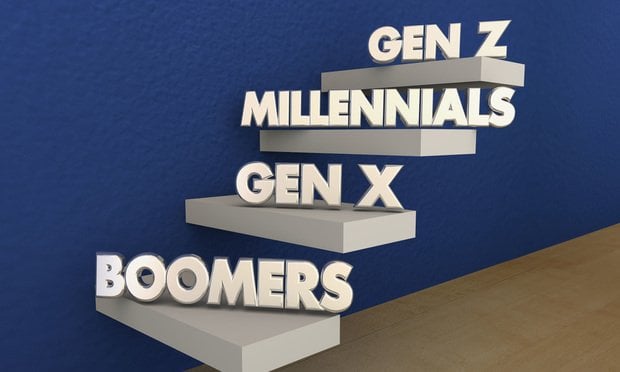 Pensions are "a two-sidedgame." (Photo: Shutterstock)
Pensions are "a two-sidedgame." (Photo: Shutterstock)
Large sponsors of single-employer defined benefit pension plans saw a negligibleimprovement in aggregated funded status in 2019, from 86 percent to87 percent, despite a banner year for returns in equitymarkets.
|That's because yields on the corporate bond rate used to assessfuture liabilities dropped by nearly 100 basis points,from 4.19 percent to 3.21 percent, a historical low that in turnsubstantially raised the value of future liabilities.
|"The drop in interest rates had a huge impact," explained JoeGamzon, senior director, retirement, at Willis Towers Watson. "Lastyear, companies would have never predicted rates would fall 100basis points."
|Just how huge? Consider this: Pension assets of 376 Fortune 1000 pensionsponsors increased $140 billion in 2019, from $1.36 trillion to$1.5 trillion.
|Among all asset classes, the average return was nearly 20percent in 2019, according to Willis Towers Watson analysis. U.S.large-cap equities returned 32 percent.
|Even bonds delivered in response to rate cuts from the FederalReserve. In the aggregate, bonds returned 9 percent, with corporateand longer-term government bonds, which pension sponsors often usewhen implementing liability-driven investment strategies, returning23 percent and 15 percent, respectively.
|Yet the aggregate funded ratio of the plans realized a mere 1percent bump.
|The 100-basis-point decrease in the discount rate was thelargest single-year drop in two decades, said Gamzon. That largelyexplains why aggregate pension obligations increased 9 percent,from $1.58 trillion to $1.72 trillion by the end of the year.
|Pension smoothing set to phase out beginning in 2021
The investment gains in 2019 were the strongest pension sponsorshave experienced since 2003, according to WTW.
|"It was a knock-it-out of the park type of year on theinvestment side, but pensions are a two-sided game," notedGamzon.
|The total funding deficit of the 376 plans is $216 billion, down$6 billion from the end of 2018. Contributions to plans were downfrom 2018, when sponsors rushed to fund plans beyond minimumrequired contributions to realize higher write-offs on the heels of2017's tax reform bill.
|The 87 percent aggregate funded ratio is vastly improved fromthe financial crisis, when it plummeted to 77 percent, but still afar cry from the 106 percent funded ration in 2007.
|This year is scheduled to be the last that sponsors will have totake advantage of so-called pension-smoothing calculations thatartificially decrease plan liabilities, in turn lowering annualcontribution requirements.
|Congress passed a more forgiving way of calculating planliabilities in 2012, and again in 2014, as a way to give pensionsponsors relief as they continued to recover from the financialcrisis, explained Gamzon.
|Under that relief, sponsors could calculate the corporate bondrate at 90 percent of the 25-year average.
|In 2021, that is scheduled to drop to 85 percent of the 25-yearaverage, and then ultimately to 70 percent by 2024.
|"This will be significant for many companies," said Gamzon. "At70 percent the impact of the relief will be mostly gone."
|In real terms, WTW is expecting a 150 basis point decrease inthe discount rate by the time the smoothing allowances expire. Thatwould translate to an increase of 15 percent to 20 percent of aplan's obligations.
|"That's pretty significant," said Gamzon.
|Increased liability calculations could translate to higherminimum funding requirements, particularly if returns oninvestments slow. Moreover, as pensions have recovered over thepast decade, more have dovetailed to liability-driven investmentstrategies that overweight allocation to fixed income. That meansless cash is available to pursue aggressive returns in riskierequities.
|"Most companies now have a more significant portion of theirassets in fixed income than ever before. If that part of theportfolio is averaging 3 percent return or less, it will be toughto keep an overall return assumption rate at 6 or 7 percent," saidGamzon.
|For the most part, large sponsors are aware of the headwinds,said Gamzon. While one option would be to lobby Congress to extendthe pension-smoothing calculus in place today, he has not heardmuch effort to that end.
|Sponsors may also want to accelerate contributions to plans tooffset increased premiums to the Pension Benefit Guaranty Corp.that will come as liabilities increase in 2024, he said.
|"Plans will pay more for their liabilities starting next year,or you can hope you can earn your way out of the increases," hesaid.
|READ MORE:
Complete your profile to continue reading and get FREE access to BenefitsPRO, part of your ALM digital membership.
Your access to unlimited BenefitsPRO content isn’t changing.
Once you are an ALM digital member, you’ll receive:
- Critical BenefitsPRO information including cutting edge post-reform success strategies, access to educational webcasts and videos, resources from industry leaders, and informative Newsletters.
- Exclusive discounts on ALM, BenefitsPRO magazine and BenefitsPRO.com events
- Access to other award-winning ALM websites including ThinkAdvisor.com and Law.com
Already have an account? Sign In
© 2024 ALM Global, LLC, All Rights Reserved. Request academic re-use from www.copyright.com. All other uses, submit a request to [email protected]. For more information visit Asset & Logo Licensing.








